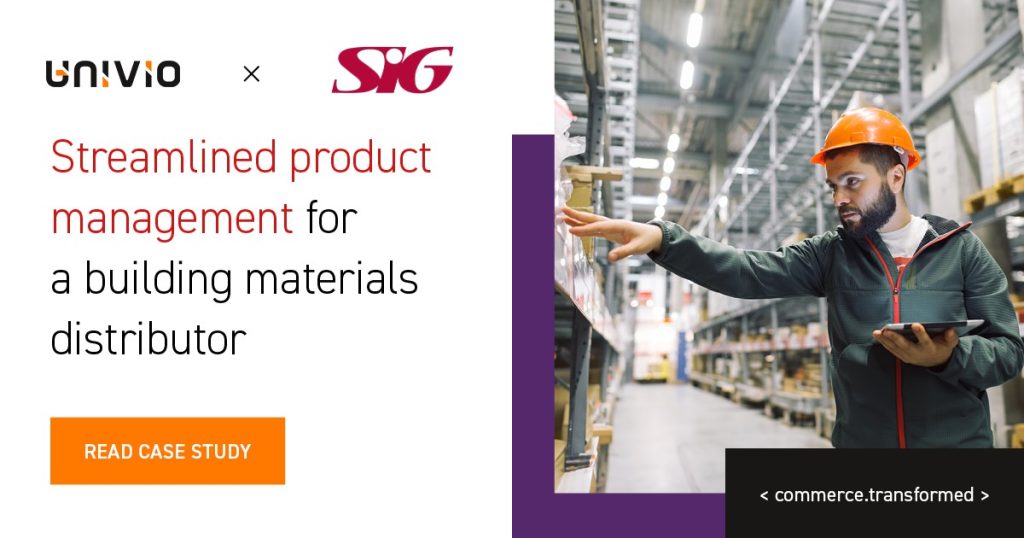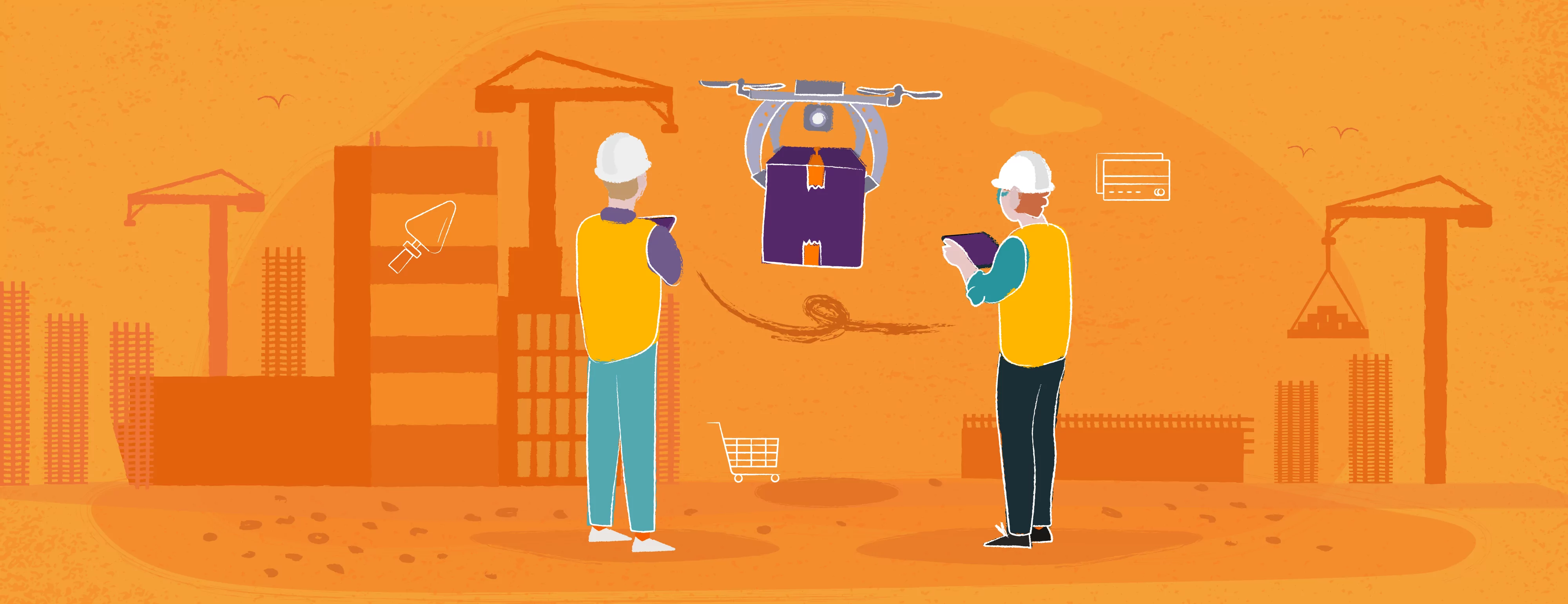Internet of Things (IoT) in Construction: Safety and Optimization of Construction Processes
Imagine the construction site of the future: cranes move with precision controlled by real-time data, workers wear smart helmets that monitor their safety, and construction material consumption is tracked with centimeter-level precision.
This is not science fiction, but a reality that is becoming part of the construction sector thanks to the Internet of Things. The IoT market for the construction industry is expected to grow almost fourfold by 2031, clearly confirming the potential of this technology.
What Is IoT and Why Is It So Important in Construction?
IoT is a collection of connected devices, machines, and systems that communicate with each other via wired and wireless networks. In construction, the Internet of Things enables the collection and analysis of data from various sources, which allows for process optimization, increased efficiency, and improved safety. With sensors, wearable devices, and monitoring systems, the construction site is becoming an intelligent ecosystem that provides valuable information in real time.
In practice, IoT allows for real-time monitoring of all aspects of a construction site – from the condition of the structure, through the location of equipment, to worker safety and environmental conditions.
Architecture of IoT Systems – The Foundations of the Future of Construction
The architecture of IoT systems is the foundation of the revolution taking place in construction. It determines how effectively data from the construction site will be collected, processed and used. It consists of layers, each of which plays a key role: from sensors and devices collecting data, through the communication network transmitting information, to cloud platforms where data is analyzed and visualized.
A well-designed IoT architecture enables the integration of various systems and devices, providing a coherent and comprehensive picture of the situation on the construction site. It is thanks to it that we can monitor the progress of work, the condition of machines, weather conditions and employee safety in real time, which translates into better project management, cost reduction and risk minimization.
The Internet of Things in construction includes five key elements that together create an intelligent ecosystem on the construction site.
1. Sensors and devices – these are the basic elements of IoT that collect data from the environment. These can be temperature, humidity, vibration, motion sensors, as well as wearable devices such as smart helmets or wristbands.
2. Connectivity – data collected by sensors must be sent to a central system. Various communication technologies are used for this, such as Wi-Fi, BLE (Bluetooth Low Energy), Z-Wave, ZigBee, Sigfox, cellular networks, LPWAN (Low Power Wide Area Network) and LoRaWAN (Long Range Wide Area Network).
3. Data platform – the collected data is stored and processed on a data platform, often in the cloud. This platform allows data analysis, report generation, and information visualization.
4. Applications and software – use the processed data to generate valuable information and make decisions. These can be applications for monitoring equipment status, project management, security analysis or energy consumption optimization.
5. Security – due to the fact that IoT systems operate on large amounts of data, security is a very important aspect. In construction, where sensitive data is often handled, protection against cyberattacks is key.
Each of these elements must be adapted to the specific requirements of the construction site, taking into account difficult environmental conditions, power constraints and security requirements.
Intelligent Equipment Management – Optimization and Prediction
One of the key areas of IoT application in construction is equipment management. Sensors placed on construction machines monitor their technical condition, location and performance. This data is sent to a central system, where it is analyzed and used to optimize the use of equipment. This allows:
• Minimizing downtime: IoT systems predict potential failures and inform about the need for maintenance before damage occurs.
• Optimizing fuel consumption: sensors monitor fuel consumption and identify inefficient machines, which allows for reducing operating costs.
• Tracking the location of equipment and access control: GPS and RFID systems allow tracking the location of machines and tools and controlling access to them, e.g. using a magnetic card, which prevents theft and facilitates fleet management.
Safety First – IoT as a Construction Site Guardian
Employee safety is a priority for every construction company. IoT offers a range of solutions that minimize the risk of accidents and create a safe working environment through:
• Wearable devices: smart helmets, wristbands and vests monitor employees’ vital signs, such as heart rate and temperature, and warn about threats.
• Motion and proximity sensors: these systems prevent machine collisions and accidents by alerting operators to dangerous situations.
• Video monitoring: cameras with image analysis detect unusual activities and alert the security services.
Modern safety helmets are equipped with advanced sensors that significantly increase the level of employee safety. An example is a smart helmet equipped with:
• accelerometers for fall detection,
• air quality and hazardous gas detection sensors,
• monitoring the employee’s ambient and body temperature,
• communication modules for sending alerts,
• locators that allow you to determine the exact location of the employee.
Efficient Material Management – From Warehouse to Construction Site
IoT also improves the management of building materials. RFID tags, QR codes and GPS monitoring systems enable tracking the location and condition of materials at every stage – from the warehouse to the construction site. The effect is:
• reduction of losses: IoT systems minimize the risk of lost or damaged materials,
• optimized deliveries: data on inventory and work progress allows for just-in-time delivery planning, which reduces storage costs,
• improved inventory: automatic inventory systems use drones and robots to count and locate goods.

Sustainable Construction – Internet of Things in the Service of the Environment
IoT also plays a key role in promoting sustainable construction. Sensors monitor energy and water consumption, air quality and noise levels, allowing inefficiencies to be identified and eliminated. This has an impact on:
• Reduction of CO2 emissions – smart energy management systems optimise energy consumption and reduce greenhouse gas emissions.
• Water savings – sensors monitor water consumption and detect leaks, allowing for the conservation of this valuable resource.
• Environmental health – air quality and noise monitoring systems minimise the negative impact of construction on the surrounding area.
Sensory Layer – Eyes and Ears of Intelligent Construction
An important element of an effective IoT system are precise new-generation MEMS sensors. These are miniature electromechanical systems that can detect changes in the physical environment, such as movement, vibration, temperature or humidity.
Modern MEMS sensors used in construction are characterized by high resistance to dust, vibration and extreme temperatures, which is crucial in difficult construction site conditions. Additionally, thanks to miniaturization and low energy consumption, they can operate for a long time on a single set of batteries.
Experience from construction sites shows that properly selected sensors can significantly affect the safety and efficiency of work. For example, three-axis accelerometers mounted on structures enable continuous structural monitoring, detecting vibration anomalies that may indicate potential problems. The practical application of these sensors allows for continuous monitoring of vibrations in the structure, detection of potential threats and assessment of the technical condition of equipment. IoT sensor systems are used to monitor various construction processes, allowing for early detection of potential problems and prevention of accidents.
Communication Infrastructure – The Backbone of The System
Effective communication between IoT system elements requires a reliable network infrastructure. Experience from large construction projects shows that redundancy and resistance to harsh environmental conditions are key.
Mesh networks based on standard low-power wireless protocols are often used in monitoring construction sites. This technology enables the creation of self-organizing wireless networks that are resistant to single node failures and can automatically redirect traffic in the event of disruptions.
The key advantages of mesh networks in construction are:
• high reliability thanks to backup communication paths,
• low power consumption, which is crucial for battery-powered devices,
• easy scalability – the ability to add new nodes without having to rebuild the infrastructure,
• resistance to harsh environmental conditions typical of construction sites.
In practice, mesh networks allow for full coverage of the construction site, providing connectivity even in hard-to-reach places.
Equipment Monitoring – Prediction Instead of Reaction
Modern IoT systems not only monitor the condition of equipment, but actively anticipate potential failures. Predictive analysis uses advanced machine learning algorithms to interpret sensor data.
Predictive monitoring systems in construction focus on key parameters of machines and equipment, such as:
• vibration patterns of engines and gearboxes,
• temperatures of bearings and hydraulic components,
• pressure in hydraulic systems,
• fluid levels,
• electrical parameters (voltage, current, resistance).
This technology is based on the assumption that most failures are preceded by subtle changes in operating parameters, which can be detected by IoT sensors long before the failure occurs.
System Integration – The Key to Success
Successful IoT implementation requires seamless integration with existing construction management systems. Proper integration can deliver significant operational and financial benefits, including reduced project turnaround times.
Key aspects of IoT system integration include:
• standardization of communication protocols,
• ensuring interoperability between different systems,
• central data management platform,
• uniform user interface for all systems,
• security and access control.
A properly integrated IoT system allows for a holistic view of the entire construction project, enabling coordination of all processes and resources.
Synchronization with BIM – a New Era of Design
Building Information Modeling BIM combined with IoT creates a digital twin of the construction site, enabling precise tracking of work progress and detection of potential clashes. Systems that combine data from IoT sensors with the BIM model allow for automatic updating of the 3D model based on the actual progress of work.
Benefits of BIM-IoT integration:
• automatic verification of compliance of execution with the design,
• early detection of deviations and potential problems,
• update of schedules based on actual progress,
• optimization of logistics and material management,
• improved coordination between different teams.
Integration of BIM and IoT allows for early detection of potential problems and implementation of changes in the design without costly corrections at the execution stage.
Data Analytics – From Information to Action
Modern IoT systems generate huge amounts of data, the proper analysis of which is key to optimizing construction processes. Implementing advanced analytical systems allows for real-time decision-making.
Effective use of IoT data requires advanced analytical tools that can transform raw data into actionable information.
Key data analysis methods in construction:
• predictive analysis to predict delays and problems,
• pattern analysis to optimize processes,
• machine learning to automatically identify anomalies,
• data visualization to better understand trends,
• real-time processing for immediate response.
Data analysis from IoT sensors allows for the identification of patterns and optimization of various aspects of the construction site, leading to significant improvements.
Edge Computing – On-Site Computing Power
Edge computing has become a key element of modern IoT systems in construction. It allows for immediate response to threats and real-time process optimization.
Traditional cloud computing models may not meet the requirements of IoT systems in construction due to data transmission delays and limited network bandwidth on construction sites. Edge computing solves this problem by moving some data processing closer to the source of its generation.
Benefits of edge computing in construction:
• minimal delays in processing critical data,
• reduction of data transmission costs to the cloud,
• increased reliability (systems can operate even with a connection failure),
• better protection of data privacy and security,
• ability to operate in areas with limited connectivity.
Practical applications of edge computing include construction monitoring systems and employee safety systems that must operate without delays.
Cybersecurity of IoT Systems in Construction
As IoT technologies become more common on construction sites, cybersecurity issues become critical. The construction sector is experiencing an increase in cyberattacks, with IoT systems being a primary attack vector.
IoT System Threats and Vulnerabilities
The specificity of IoT systems in construction creates unique challenges for cybersecurity. The main threats include:
1. Attacks on remotely controlled construction equipment – taking control of cranes, excavators or building automation systems can lead to serious physical damage and life-threatening situations.
2. Theft of sensitive design data – building plans, delivery schedules for high-value materials or data on security systems are attractive targets for cybercriminals.
3. Manipulation of sensor data – modifying readings from construction sensors can lead to incorrect engineering decisions and potentially dangerous situations.
4. Ransomware attacks – encrypting construction management system data can lead to costly downtime and project delays.
Strategic Approach to Cybersecurity
The multi-layered model of IoT protection in construction includes
• device-level security: two-factor authentication, automatic updates, physical security, anomaly monitoring,
• network-level security: network segmentation, communication encryption, intrusion detection systems, redundant communication paths,
• application and data-level security: multi-level access permissions, data encryption at rest, regular security audits, backup and disaster recovery solutions.
IoT cybersecurity investments should be a significant part of the implementation budget to ensure the appropriate level of protection.
The Future of IoT in Construction
The development of IoT technology in construction is heading towards even greater automation and integration. Trends indicate the growing importance of:
• artificial intelligence in data analysis – AI systems may become capable of autonomous decision-making based on sensor data,
• construction robotics – autonomous construction robots equipped with IoT sensors will perform increasingly complex tasks,
• augmented reality – the integration of IoT data with AR systems will allow employees to visualize invisible elements,
• blockchain in smart contract management – blockchain technology will ensure the immutability and transparency of IoT records,
• sustainable construction – IoT systems will enable precise monitoring of resource consumption, supporting sustainable construction practices.
In the coming years, it is expected that IoT systems will be fully integrated with BIM and project management processes, leading to the creation of fully digital construction ecosystems, where every element of the project will be monitored and managed in real time.
Internet of Things – Start Your Digital Transformation Today
The Internet of Things is revolutionizing the construction industry by enabling remote monitoring and management of construction sites. By connecting machines and devices to the network, construction companies gain valuable information about their condition, location and performance.
Implementing IoT technology in construction is not only a step towards digitalization, but a strategic investment in the future that ensures safety, optimization and competitiveness in a dynamically changing market. Start your digital transformation today and build the smart construction site of the future.







